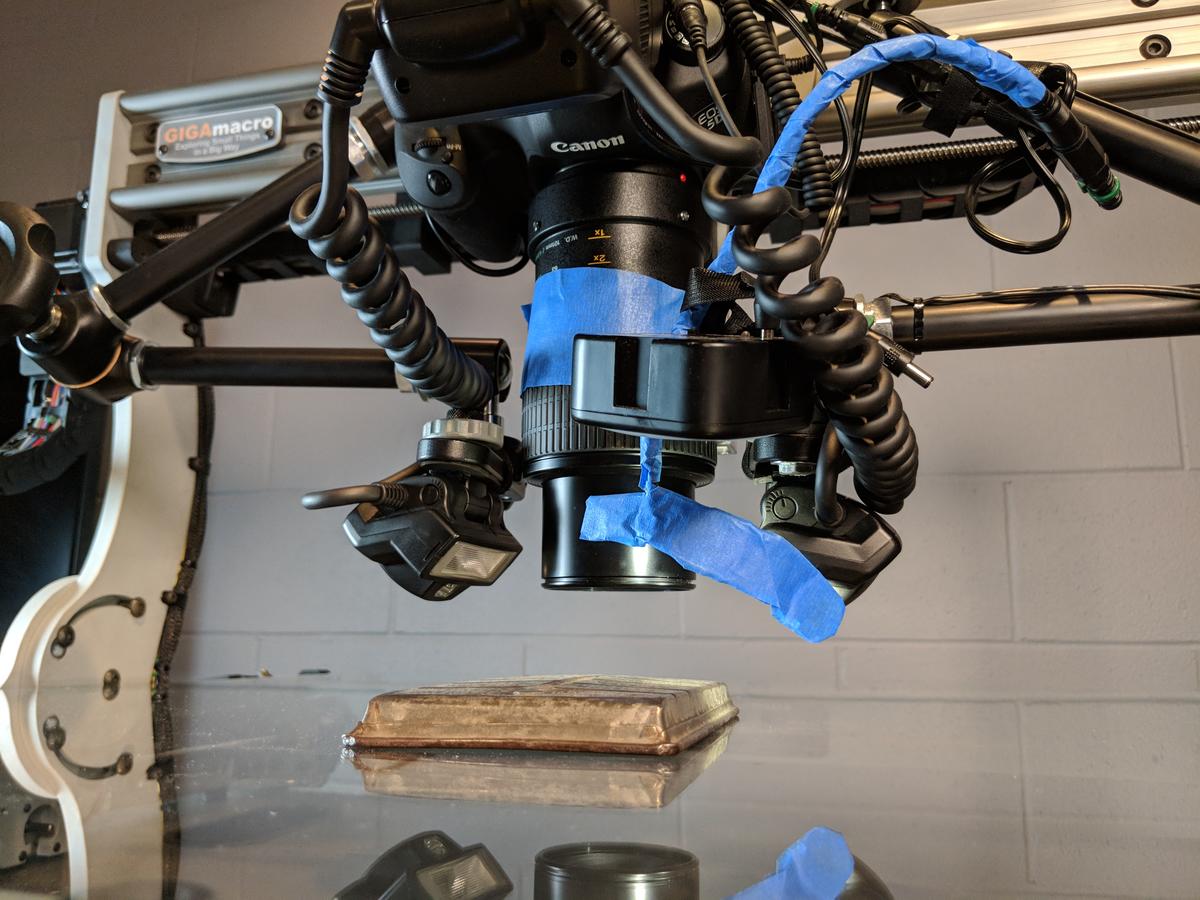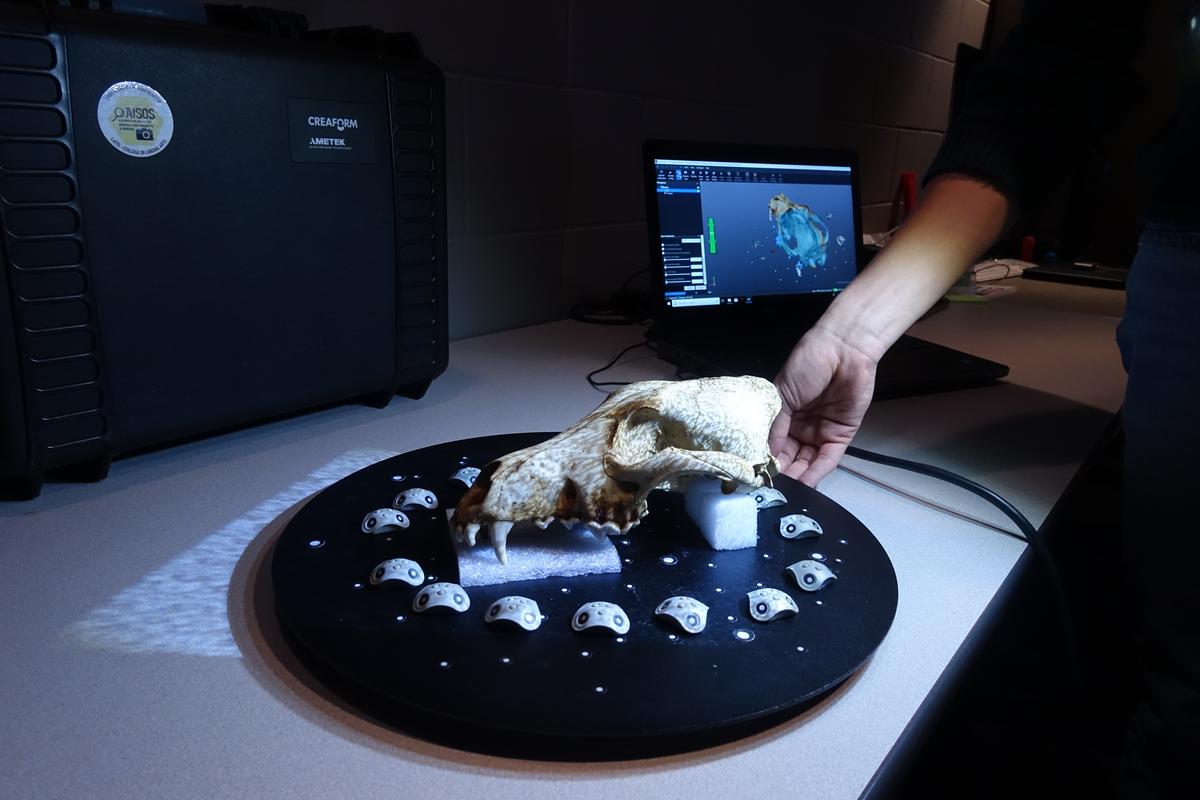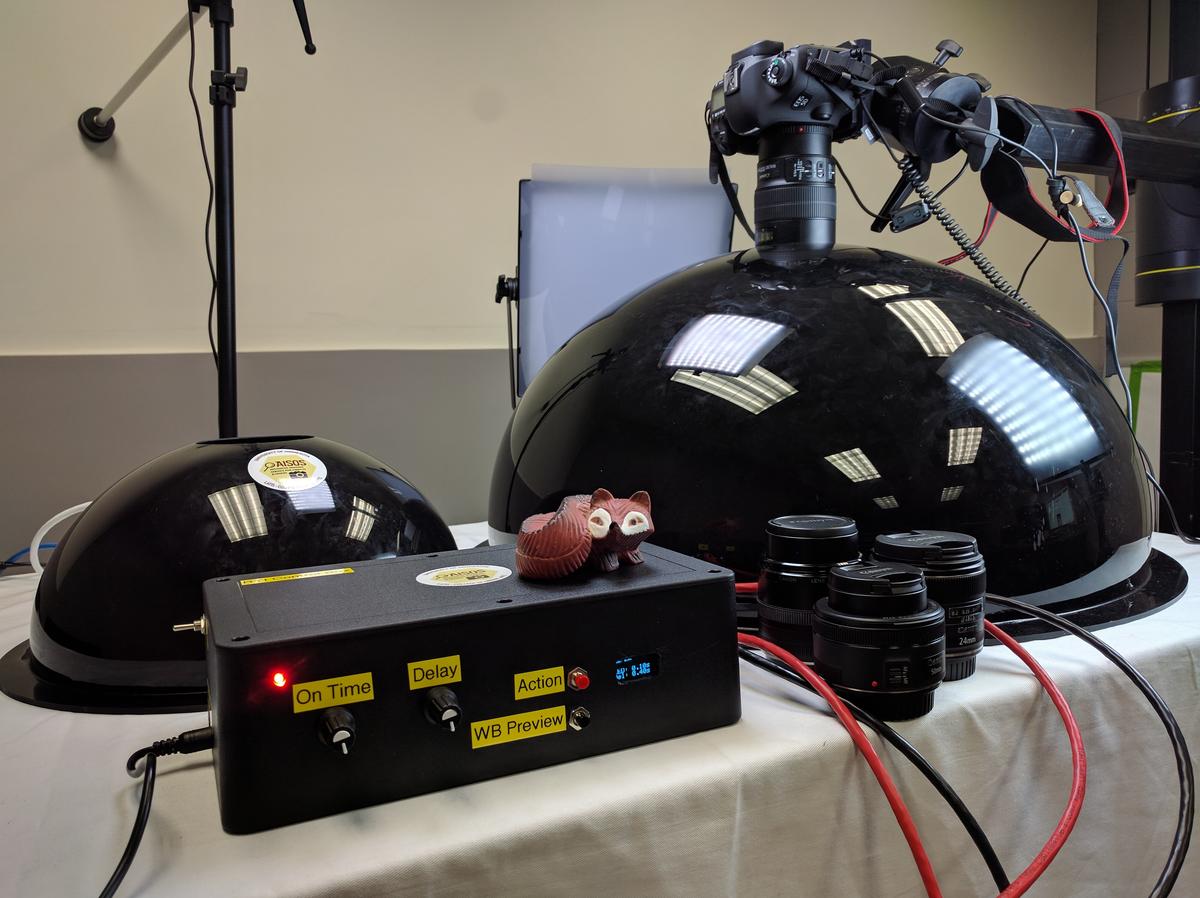Scanning Electron Microscopy (SEM)
The newest addition to AISOS is a Hitachi TM4000Plus tabletop SEM. It is capable of more than 10,000x magnification, as well as elemental detection. Like all devices in AISOS, time on the machine is available to all University of Minnesota students and faculty free of charge.
Gigapixel Imaging
Any digital image is made up of pixels - a single square of color. A standard digital camera might capture images at a resolution of approximately 10 megapixels, or 10 million pixels. Gigapixel imaging refers to images that have at least one billion pixels, or 100 times the resolution of a typical digital image.
To perform gigapixel imaging in AISOS, we use a Gigamacro. The Gigamacro is a tabletop device that takes hundreds or thousands of high resolution digital images, and then stitches them all together to create a single, ultra high resolution image. The Gigamacro can also capture depth or height data, so can be used for what is referred to as "2.5d" imaging. These can even be 3d printed.
Gigapixel images can be used for a variety of purposes. They can capture very fine details of objects, so are well suited to long term archiving or study. They can also be used for very large prints. When displayed on the web, they can be presented as "zoomable" images, which allow the viewer to access all of the available detail.
3D Imaging
3D imaging involves capturing a digital, three dimension representation of an object. This includes both the three dimensional makeup, as well as the surface details like texture. 3D objects can be displayed on the web, incorporated into virtual reality simulations, used in animations, or even 3D printed.
AISOS supports a variety of 3D capture techniques. Our primary technique is photogrammetry. Photogrammetry involves taking many pictures of an object from different sides. These can be processed into a 3D model using software. Photogrammetry is capable of creating extremely high resolution, detailed representations of objects. It can also be used to capture spaces or even entire buildings. However, it has certain limitations. Objects that are very reflective, a single color, or semi-transparent can be difficult to capture.
In order to capture other types of objects, AISOS uses a second 3D capture technology called Structured Light Imaging. Structure light imaging involves projecting different patterns onto an object, and then photographing them. For example, if you project a grid onto an object, the variations in the surface of the object will distort the grid. By comparing the photograph with the original grid, software can calculate the surface of the object. For structured light capture, we're relying on handheld scanners from Creaform, as well a fixed HP SLS-3 with stereo cameras.
Finally, for outdoor capture, we often use LiDAR, via a FARO FocusM70 terrestrial LiDAR unit.
Reflected Light Capture
Reflectance Transformation Imaging (RTI) is a method for capturing very subtle surface details of an object. For example, tool marks, scratches, or carved reliefs. These subtle details are sometimes lost during traditional 3D imaging. RTI works by taking multiple images of an object, each with light coming from a different direction. By combining all of the images with data about the locations of the light in each picture, surface details can be calculated.



